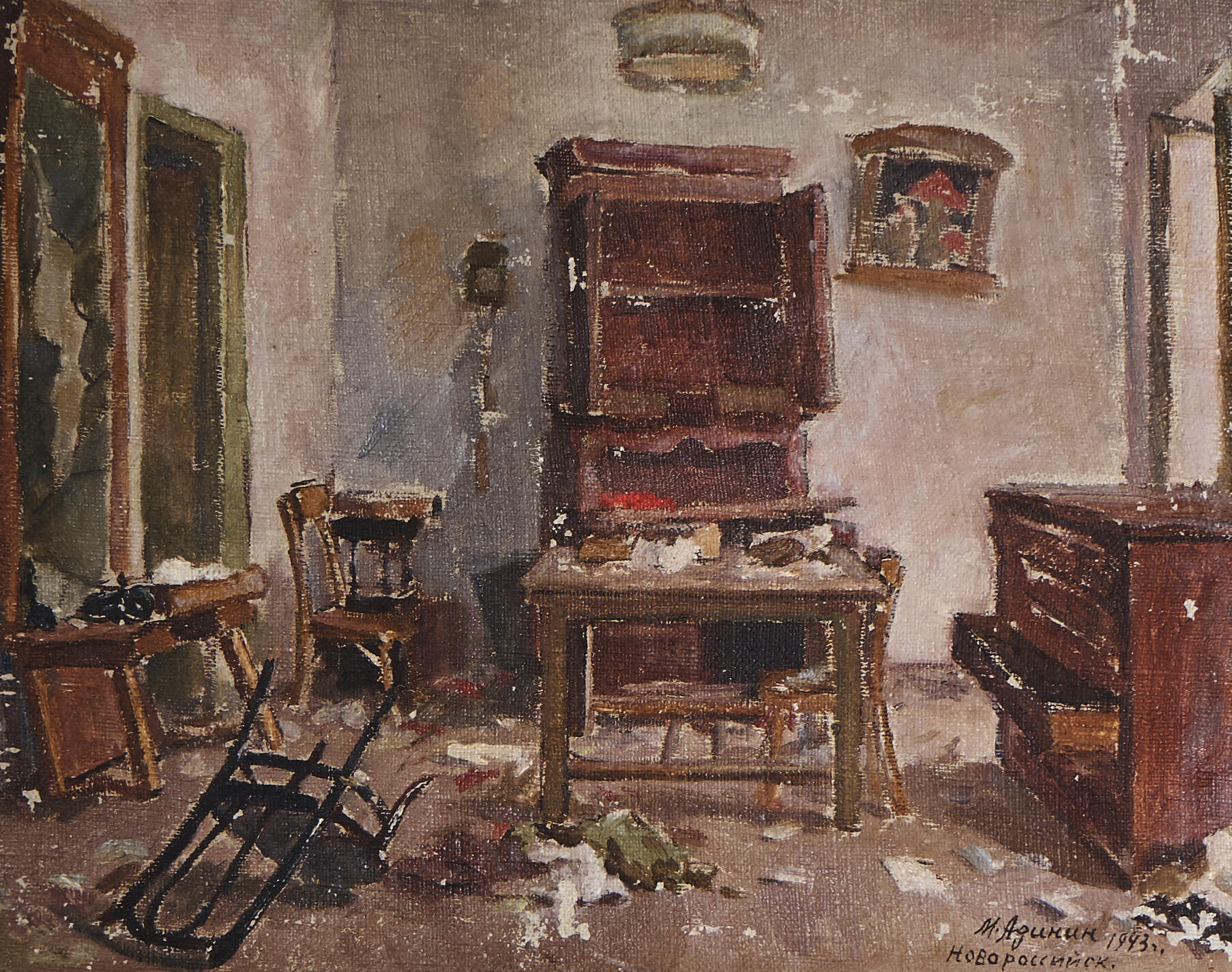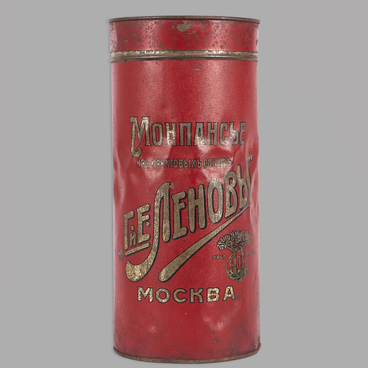The fighting in the Novorossiysk region lasted 393 days — from August 1942 to September 1943. During that time, the city was almost completely destroyed. According to the Decree of the Council of Ministers of the RSFSR, Novorossiysk was included in the list of 15 cities that were most damaged during the war and subject to priority restoration.
Photographs that were taken by front-line correspondents of the North Caucasian Front and the Black Sea Fleet show what the city looked like after the retreat of the Nazi troops. However, in addition to correspondents, there were many artists fighting on the fronts of the Great Patriotic War. One of them was Mikhail Arinin.
Throughout his life, Arinin was devoted to landscape painting. His works echo the traditions of Russian landscape art, which he learned during the years of study with such Russian painters as P.S. Utkin, A.O. Nikulin, A.I. Savinov, and V.E. Borisov-Musatov. Living in Central Asia, the artist rendered the Eastern flavor with its bright colors and endless deserts in his works. Yellow, red, and orange tones, full of sun and heat, were replaced by a completely different coloristic theme, after the artist moved to his native Saratov region and began to paint the Volga and the surrounding nature. Calm gray, blue and green tones spill over Arinin’s paintings along with the waters of his beloved river and water meadows.
The war brought changes into the artist’s work. He started painting portraits of soldiers, landscapes of the front lines, trenches, and ruined cities. A series of sketches made by the artist in the liberated Novorossiysk belongs to this period. One of them is called “Interior of Novorossiysk”. A room in a city apartment conveys the atmosphere of the whole wartime city: the windows are broken, the furniture is turned upside down, the door is wide open, there is garbage on the floor and a picture hanging crookedly on the wall. This is an apartment that was abandoned by its owners — the enemies may have lived in it. The apartment that is waiting for people to return, like the whole city of Novorossiysk, a city in ruins that was waiting for restoration.
Photographs that were taken by front-line correspondents of the North Caucasian Front and the Black Sea Fleet show what the city looked like after the retreat of the Nazi troops. However, in addition to correspondents, there were many artists fighting on the fronts of the Great Patriotic War. One of them was Mikhail Arinin.
Throughout his life, Arinin was devoted to landscape painting. His works echo the traditions of Russian landscape art, which he learned during the years of study with such Russian painters as P.S. Utkin, A.O. Nikulin, A.I. Savinov, and V.E. Borisov-Musatov. Living in Central Asia, the artist rendered the Eastern flavor with its bright colors and endless deserts in his works. Yellow, red, and orange tones, full of sun and heat, were replaced by a completely different coloristic theme, after the artist moved to his native Saratov region and began to paint the Volga and the surrounding nature. Calm gray, blue and green tones spill over Arinin’s paintings along with the waters of his beloved river and water meadows.
The war brought changes into the artist’s work. He started painting portraits of soldiers, landscapes of the front lines, trenches, and ruined cities. A series of sketches made by the artist in the liberated Novorossiysk belongs to this period. One of them is called “Interior of Novorossiysk”. A room in a city apartment conveys the atmosphere of the whole wartime city: the windows are broken, the furniture is turned upside down, the door is wide open, there is garbage on the floor and a picture hanging crookedly on the wall. This is an apartment that was abandoned by its owners — the enemies may have lived in it. The apartment that is waiting for people to return, like the whole city of Novorossiysk, a city in ruins that was waiting for restoration.


